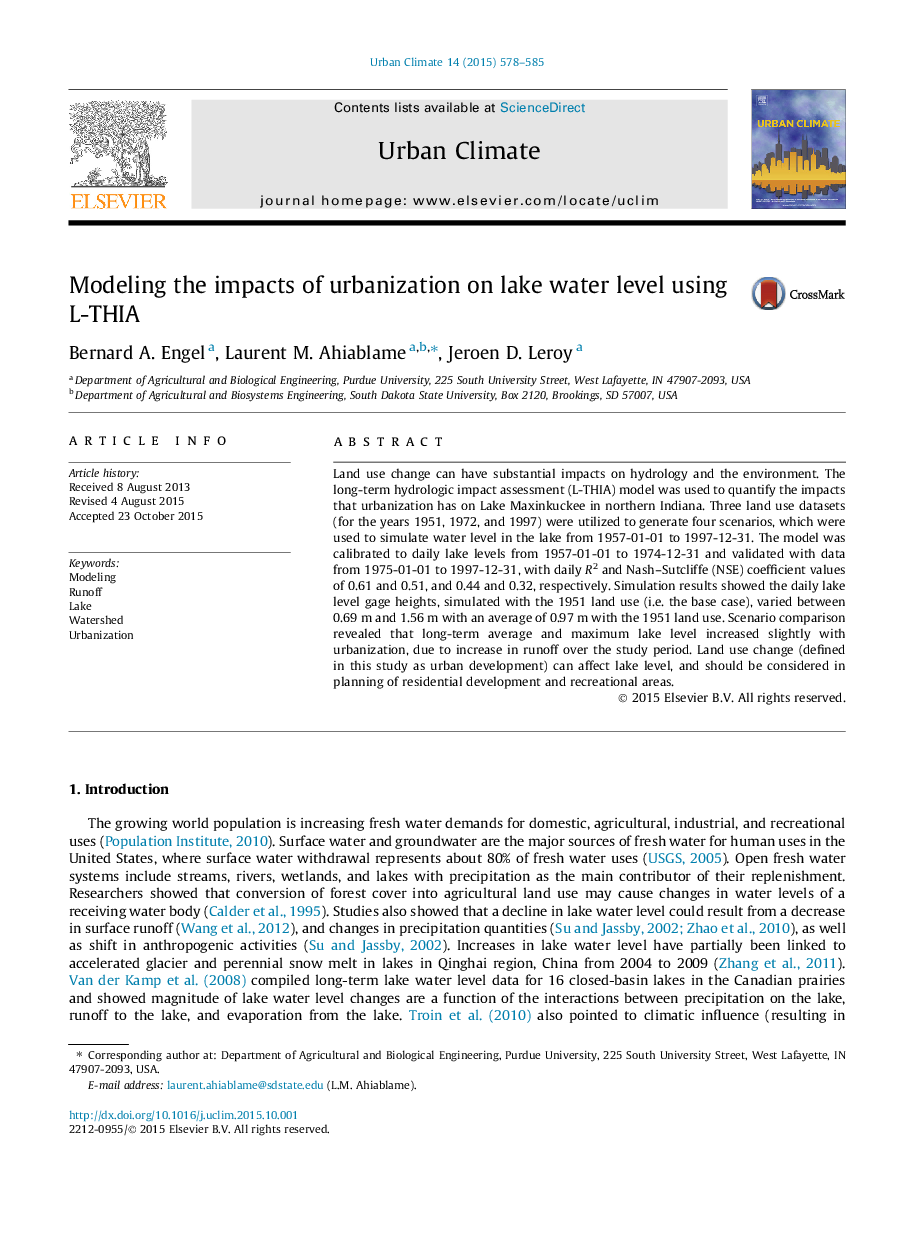| Article ID | Journal | Published Year | Pages | File Type |
|---|---|---|---|---|
| 10260266 | Urban Climate | 2015 | 8 Pages |
Abstract
Land use change can have substantial impacts on hydrology and the environment. The long-term hydrologic impact assessment (L-THIA) model was used to quantify the impacts that urbanization has on Lake Maxinkuckee in northern Indiana. Three land use datasets (for the years 1951, 1972, and 1997) were utilized to generate four scenarios, which were used to simulate water level in the lake from 1957-01-01 to 1997-12-31. The model was calibrated to daily lake levels from 1957-01-01 to 1974-12-31 and validated with data from 1975-01-01 to 1997-12-31, with daily R2 and Nash-Sutcliffe (NSE) coefficient values of 0.61 and 0.51, and 0.44 and 0.32, respectively. Simulation results showed the daily lake level gage heights, simulated with the 1951 land use (i.e. the base case), varied between 0.69Â m and 1.56Â m with an average of 0.97Â m with the 1951 land use. Scenario comparison revealed that long-term average and maximum lake level increased slightly with urbanization, due to increase in runoff over the study period. Land use change (defined in this study as urban development) can affect lake level, and should be considered in planning of residential development and recreational areas.
Related Topics
Physical Sciences and Engineering
Earth and Planetary Sciences
Earth and Planetary Sciences (General)
Authors
Bernard A. Engel, Laurent M. Ahiablame, Jeroen D. Leroy,
